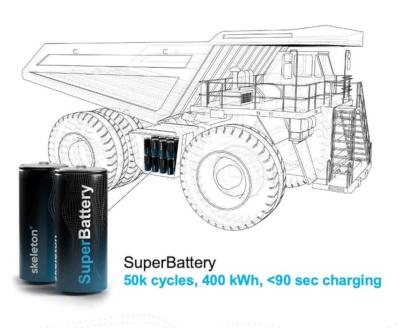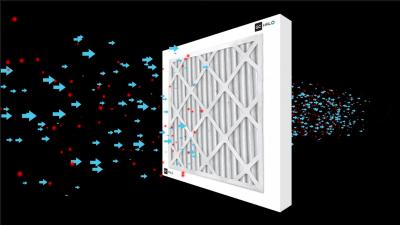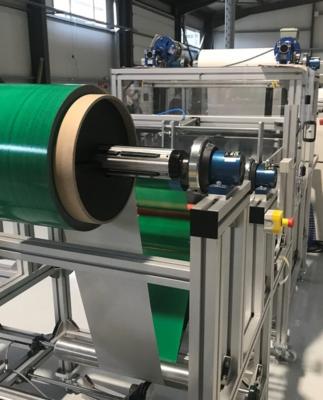The Graphene-Info weekly newsletter
Published: Tue, 10/18/22
The Graphene-Info newsletter (October 21, 2022)
Cannot read this? View it online here
Digital University of Kerala signs MoUs with UK universities to further graphene technologies
The Digital University of Kerala (DUK) has signed Memorandum of Understandings (MoUs) with four universities in the UK: Oxford, Edinburgh, Manchester and Siegen, for collaboration in the field of graphene.
It was noted that the effort of state government is to start industries based on new generation technologies, and the present MoUs are expected to further strengthen Kerala’s ability to develop cutting-edge research and develop a knowledge economy in the sector.
Skeleton Technologies launches its SuperBattery and unveils Shell as partner
Skeleton Technologies has officially launched its SuperBattery, and unveiled Shell as its partner. Skeleton is joining a Shell-led consortium to offer electrification solutions for mining sites.
SuperBattery is an innovative technology combining the characteristics of supercapacitors and batteries. SuperBattery has been developed to serve the needs of several sectors and is currently being used and/or tested in hybrid and fuel cell EVs, buses, trucks, and charging infrastructure.
First Graphene and ZEBCO to develop graphene-enhanced heating device
First Graphene will be developing and marketing a unique heating device using its PureGRAPH graphene, along with UK-based ZEBCO Heating. The parties have signed a joint development agreement (JDA) to develop the device, which is suitable for new installations or retrofitted into existing domestic and commercial heater systems.
ZEBCO has secured an initial $87,000 grant from Innovate UK’s Fast Start Innovation Fund to fund feasibility studies and develop a proof-of-concept unit within the next six months. The device is expected to deliver energy efficiency savings, reduce greenhouse gas emissions, and be an enabler to more resilient and secure domestic heating supply.
Graphene Composites and William Blythe announce supply of graphene oxide for ink coating that destroys pathogens
Graphene Composites (GC) and William Blythe have announced a partnership in William Blythe’s supply of graphene oxide for use in GC Halo, a unique coating for air filters that destroys viruses, bacteria and mold on contact.
GC Halo is a nanoparticle ink formulation, that destroys pathogens by forming a ‘trap and kill’ layer on air filters and has been independently verified to significantly reduce SARS-CoV-2 coronavirus in the air. Fast-acting, safe and more than 99% effective against SARS-CoV-2 coronavirus, Influenza, bacteria and mold, independent tests and certifications reportedly prove GC Halo’s capabilities as a filter coating.
Graphene-enhanced composites and adhesives tested for use in satellites
An ESA project with Adamant Composites in Greece tested how the addition of graphene (and other nano-sized materials) can optimize a satellite’s thermal and electrical properties.
The airless vacuum of space is a place where a satellite can be hot and cold at the same time, with part of it in sunlight and the rest in the shade. Scientists work to minimize temperature extremes within a satellite’s body, because heat buildups might lead to parts going out of alignment or even buckling. Another undesirable outcome in highly-insulating vacuum conditions is for satellite surfaces to build up electrical charge, which may eventually result in disruptive or damaging discharge events. Composite materials are increasingly supplanting traditional metal parts aboard satellites, but these polymer-based materials possess lower thermal and electrical conductivity, compounding such problems.
Graphene help researchers to develop efficient oxygen catalysts for lithium-oxygen batteries
Researchers from the Dalian Institute of Chemical Physics (DICP) of the Chinese Academy of Sciences (CAS) and Henan Agricultural University have designed two-dimensional (2D) Mn3O4 nanosheets with dominant crystal planes on graphene (Mn3O4 NS/G) as efficient oxygen catalysts for Li-O2 batteries, achieving ultrahigh capacity and long-term stability.
The team explained that designing oxygen catalysts with well-defined shapes and high-activity crystal facets can effectively regulate the oxygen reduction reaction (ORR) and oxygen evolution reaction (OER) at the three-phase interfaces, but it is still remains challenging. The researchers reported that the Mn3O4 NS/G with the (101) facets and enriched oxygen vacancies offered a lower charge overpotential of 0.86 V than that of Mn3O4 nanoparticles on graphene (1.15 V).
Researchers develop method for the fabrication of mesoporous graphene for energy storage systems
Researchers from South-Korea's Pohang University of Science and Technology (POSTECH), Kumoh National Institute of Technology, Sungkyunkwan University, Yeungnam University, Konkuk University and University of Seoul have proposed a simple strategy for the fabrication of mesoporous graphene with applications in high-performance energy storage systems like electric double-layer supercapacitors (EDLCs).
Conventional energy storage systems made of activated carbons (ACs) tend to have a poor power density due to the insufficient specific contact area, leading to inadequate creation of an electric double layer between electrode material and electrolyte. Therefore, an active material with a high specific contact area could help obtain high energy densities and meet the needs of various energy storage systems. Graphene's remarkable electrical conductance naturally makes it a logical candidate, but the high van der Waals contact between the graphene sheets makes stacking unavoidable, producing a limited available surface area.
Researchers use graphene FET biosensor for simultaneous detection of influenza and SARS-CoV-2
Researchers from University of Texas at Austin have developed an antibody (Ab)-modified graphene field effect transistor (GFET)-based biosensor for precise and rapid influenza A virus (IAV) and severe acute respiratory syndrome coronavirus 2 (SARS-CoV-2) protein detection and differentiation.
The sensor chip that was developed comprised of four GFETs in a quadruple arrangement, separated by polydimethylsiloxane (PDMS) enclosures. Every quarter was biochemically functionalized with SARS-CoV-2 and IAV antigen-targeted Abs, one chemically passivated control, and one bare control. The third (chemically passivated) GFET was deployed to ensure that the results observed were due to Ab-antigen interaction rather than electronic fluctuations or drifts.
Metalgrass LTD
9 Har Tsin St.
Kfar Sava Hasharon 4430809
ISRAEL
Unsubscribe | Change Subscriber Options







